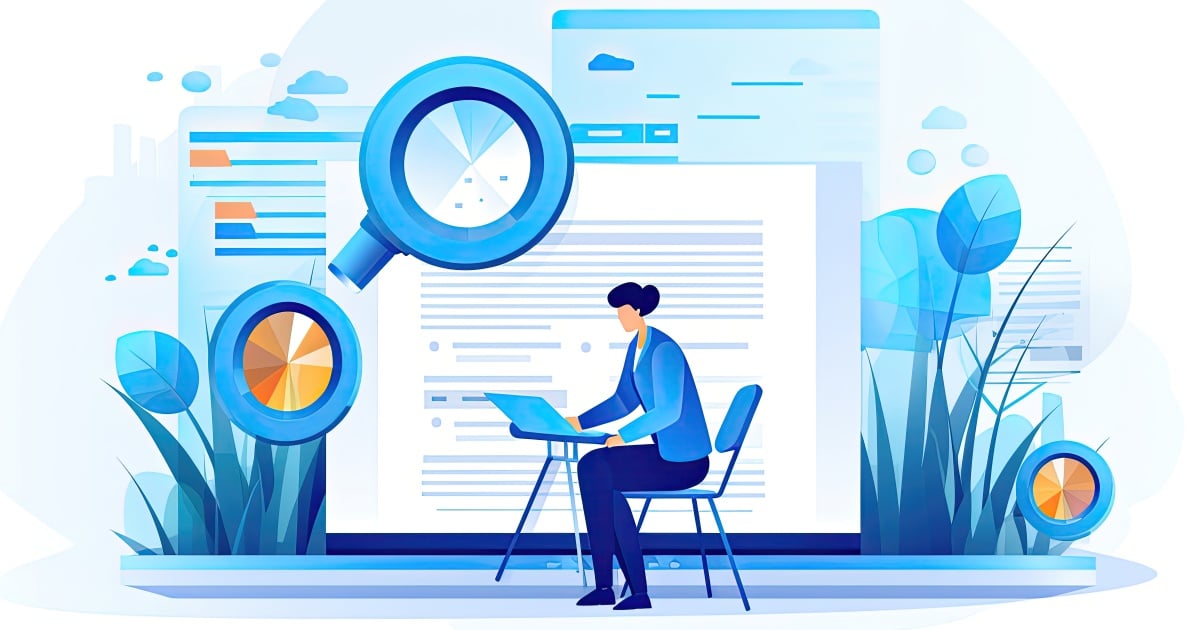
It’s not likely there is a single person at the TechSuperShow in Ft. Lauderdale that hasn’t received spam phone calls. The bigger question, frankly, is how often do they receive them and why isn’t anything being done about it? Fonative CEO Steve Smith shares some of his thoughts before ITEXPO and the other collocated TechSuperShow events on how STIR/SHAKEN can help the telecom space – and improve customer experiences – among several other interesting comments on some of the topics that will be featured in discussions in Ft. Lauderdale.
Give us a brief update on the latest news from your company.
Fonative partnered with Numeracle to begin “trusted entity” registration for our clients’ phone numbers, to minimize the chance that calls from our customers will be blocked or marked as fraud or spam by carriers. With STIR/SHAKEN so much a part of the telecom landscape, this helps make our customers more regulatory compliant and helps ensure their calls go through.
What are the biggest trends driving your market(s) today?
The migration to the cloud and in particular CPaaS is now starting to happen for enterprise communications as well as mobile apps. This results in a heightened need for security, compliance, reliability, and privacy, as the large enterprises levy their requirements on providers..
What are the most interesting or exciting innovations in the space in the past year? Why are they important?
These aren’t necessarily innovations as much as trends that signal the importance of reducing the cost and friction of enterprises to communicate with their customers. Continued deployment of cloud-based communications platforms of all types. In the enterprise, continued migration to omnichannel. Progress on anti-robocalling measures, and increased focus on data privacy.
What is the biggest communications challenge businesses have? What is keeping them from communicating as effectively as they should?
The two largest challenges are the high cost of human customer agents, and the increasing difficulty in reaching customers via outbound means. Automated interaction and AI-based bots are making good strides, but aren’t uniformly well constructed or understood yet, and those solutions aren’t universally deployed. The scourge of robocalls has caused consumers to be reluctant to answer the phone, reducing the value of this communication channel and making it more difficult for legitimate automated calls to be completed for those need to be reached.
How is this impacting their customers’ experiences?
Customers still can have frustrating interactions with enterprises, long hold times, inefficient IVR platforms, and lack of easy omnichannel interaction. Customers are reluctant to answer the phone for unknown phone numbers, given the amount of spam and scams.
How is your company helping address those challenges?
By providing text, voice, and IVR, we provide a solid platform for enterprises and/or enterprise app vendors to construct their communications systems, without the need to manage the complexity and cost of carriers, telecommunication equipment, infrastructure, and voice quality. In addition, we have already partnered to be able to register legitimate callers with the carriers, and are performing prototype work to support enterprise-level STIR/SHAKEN for call attestation.
What tools are emerging in the market that are creating more effective communications capabilities?
The work that FCC (News - Alert) and the carriers are doing with STIR/SHAKEN should resolve the problems of robocalling and scam calls, allowing us to regain our confidence about the calls coming into our devices.
How can businesses most effectively leverage the massive amount of data they collect about their customers to their advantage?
I’m going to go a different way with this. In the last decade the mantra has been “build a data lake,” and then analyze and or monetize it for advantage. Pundits have opined that data is the natural resource of the 21st century, similar to oil in the 20th century. However, with the increased concern about privacy, witnessed by GDPR, CCPA, NY state Shield, and other initiatives, some vendors will deliberately decide NOT to build data lakes. They will go counter to the trend and commit to storing and retaining a minimum amount of customer data and I believe the market will reward them. To coin a new term, these companies will have “data deserts.”
How can businesses use AI to improve their operational models?
See above regarding data. However, real-time AI driven interaction can provide a cost effective and efficient mechanism for enterprises to service standard customer service needs.
Why are so many businesses experiencing intrusions and data breaches? Are companies not taking cybersecurity as seriously as they should be?
Doing security right is hard, and really needs to be baked in at a foundational level. A smart company will think carefully about data models, encryption, VLAN segmentation, firewall, IDS, and monitoring before laying out an architecture or writing a single line of code. Tacking on security after a platform is up is nearly impossible. A good security program is a combination of architecture, policies, and operational procedures; and takes a tremendous amount of work. In most companies, this need isn’t valued sufficiently, and the work doesn’t get done. Note also the comment above about having a “data desert”, if you don’t try to build a huge amount of data about customers, there’s not as much available in a breach.
Should businesses be looking at cloud for all of their communications and other applications? How much do they really need to run on-premises these days?
The cloud is safer, more secure, and more cost-effective. My belief is that on-premises will be increasingly dwindling away.
What are the biggest challenges service providers face in deploying and delivering new services to customers?
Being agile and moving quickly, while ensuring that quality and stability remain high, and doing all of this in a secure, compliant manner.
How have customer demands and expectations changed?
Customers are now expecting high uptimes, SLAs, and security accreditations that previously were more loosely defined or required.
Where does AI fit into the equation for service providers?
AI can be used to automate routine customer service interactions in a convenient and user-friendly way.
What impact does a constantly evolving mobile device landscape have on service providers?
Service providers that create apps have to stay abreast of continual device OS changes and app store / permission policy changes.
What tools are emerging that are making it easier for service providers to deliver on customer demands?
Increased ability to outsource aspects of service providers core needs, allowing the providers to focus on features and increasing customer-value creating activities. As an example, Datadog, Science Logic and other cloud-based monitoring systems replace the need to build and manage in-house network, server, and application dashboards. Web application firewalls and global load balancing offered by CloudFlare and Amazon can eliminate the need for costly in-house firewalls, load balancers and other high-priced equipment that require a dedicated skillset. Security as a Service platforms such as Cygilent permit a company to have an outsourced Security Operations Center (SOC) with trained cybersecurity professionals. As best-in-breed cloud-based components become available, they simplify the work for the service provider.
Networks and devices are under constant attack from hackers and cyber criminals. How can service providers fend off these attacks and protect their users’ data?
Utilize a cloud-based CDN/Load Balancer/WAF such as CloudFlare and insulate the service provider systems and provide fine-grained control of access to applications and APIs, mitigate DDOS attacks, permit load balancing, and reduce bandwidth needs. They can be used for egress traffic to make the provider’s surface attack vector essentially nil. Use a 24x7 SOC that does constant thread analysis on your netflows and syslogs. Lean in and design a full Information Security Plan, including patch management, incident response playbooks, periodic external and internal surface scanning, and penetration tests.
What services present the greatest revenue opportunities for providers?
The migration to CPaaS is a game changer from the typical service provider standpoint; it creates the opportunity for higher-value services such as IVR, call recording (and storage), AI automation, easy multi-party conferencing, etc.
How are regulatory changes impacting service providers (i.e., Kari’s Law, robocalling regulation, anti-spam legislation, etc.)?
There are tremendous changes afoot globally, as governments and regulators step in to combat the excesses of the consumer-surveillance industry that has run rampant. Providers need to address how to handle data privacy and comply with a variety of laws and regulations. In the U.S., this includes CCPA, NY Shield for data privacy, as well the traditional HIPAA regulations, PCI (News - Alert) industry requirements, and SOC data center requirements, as well as newer certifications such as HITRUST and FEDRAMP.
How can service providers use AI to improve their operational models?
AIOps and AI-based modelling in some of the best monitoring platforms such as Science Logic and Datadog can provide solid insights about systems, servers and networks, and hold the hope of predictive analysis would enable companies to catch failures before they happen.
Please make one interesting, surprising, or unexpected prediction for the enterprise communications and tech space for 2020.
During 2020 the FCC will continue suing telecommunications companies for abetting robocalling, and will also begin terminating their licenses and shutting them down. Tier 1 carriers will begin rejecting traffic from such telecommunication companies, and robocalling will decrease.
Why is your ITEXPO (News - Alert) session a must-attend?
We’ll be talking about regulatory, feature set, and market dynamics of the switch from traditional telecommunication carriers that sell voice minutes to the new breed of CPaaS providers.
Why are you coming to ITEXPO?
ITEXPO is a fantastic kick-off event that gathers a who’s who of the industry and sets the stage for the entire year ahead.
Edited by
Erik Linask





